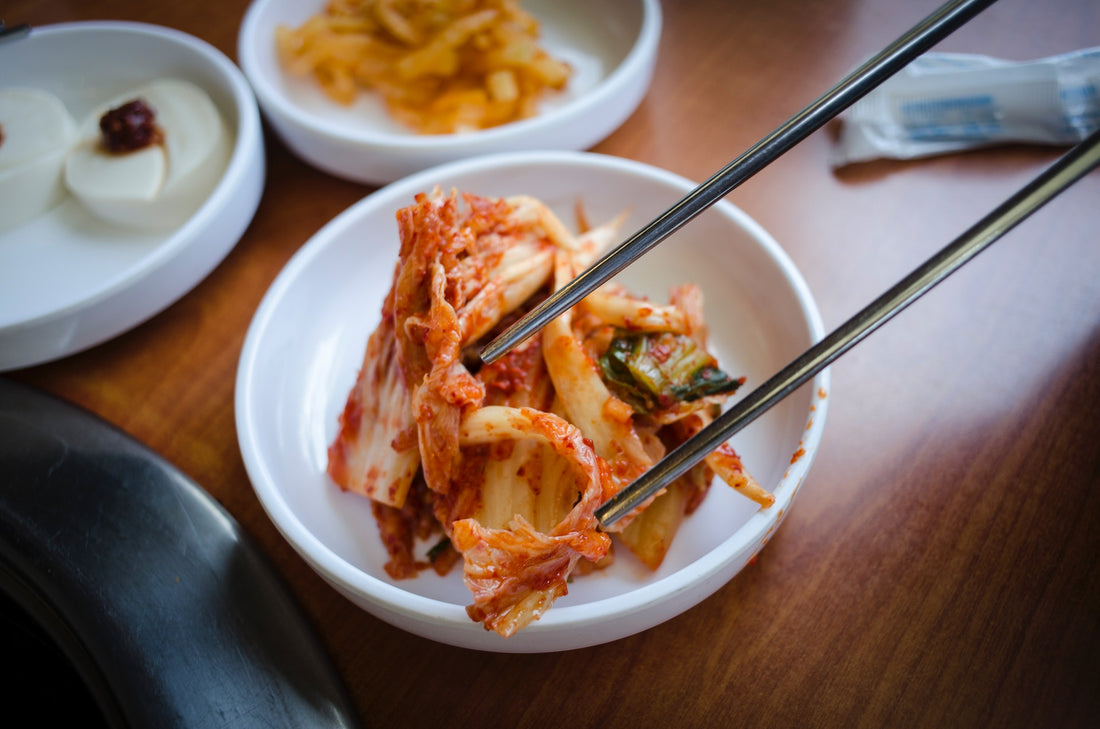
Homemade Fermented Food
Share
Homemade fermented food is one of the hottest health trends this year, and for the right reason. Adding fermented food to your daily diet brings with it numerous health benefits. For instance, people who eat fermented foods have a stronger immune system. “Research today is revealing the importance of a diverse and healthy intestinal microbiome (the microbial community in the gut) because it plays a role in fine-tuning the immune system and wards off damaging inflammation inside the body, which may lead to conditions ranging from obesity and diabetes to neurodegenerative diseases,” explains Harvard Medical School. If you want to add fermented foods to your diet and increase your intake of natural probiotics, try these recipes for homemade fermented food today!
Homemade Fermented Food: Sauerkraut
Sauerkraut is a powerful health food, with research studies showing how it offers a full spectrum of beneficial probiotics that are good for your gut and digestion. Besides the benefits of being fermented, sauerkraut is made with cabbage which has impressive health benefits. For example, a single 1-cup serving of cabbage has more than half of your daily needs of vitamin K and more than a third of your daily needs of immune-boosting vitamin C, plus important minerals like potassium and magnesium.
Sauerkraut is quite versatile as a side dish, pairing nicely with meats, sandwiches, and even breakfast foods like an omalette or scrambled egg. It adds texture and crunch, plus a slightly tangy flavor that helps add variety to your favorite meal.
1 head green cabbage, ideally local and organic
1 tbsp sea salt
Large, clean glass Mason jar with lid
For your sauerkraut brine: 1 additional tbsp of salt and 4 cups purified water
Wash your cabbage and take off the outer leaves.
Cut the cabbage in half, then again into quarters, and remove the cabbage core.
Using a sharp knife, slice the cabbage into thin, long strips.
Pour the cabbage into a large salad bowl and sprinkle a tablespoon of salt onto it.
Let it sit for 30 minutes, then massage and mash it up with your hands. By the end, you should have very bruised cabbage leaves.
Place the mashed-up cabbage into the Mason jar and pack it tightly, leaving about 2 inches of space at the top.
Mix your brine and pour it into the jar.
Seal the jar and let it sit in a cool space on your countertop for a week, then store it in your fridge and enjoy! NOTE: If you like more tangy, sour sauerkraut, take a taste after a week. Each additional day left on your counter increases its tangy flavor.
Homemade Fermented Food: Crockpot Coconut Yogurt
Start your morning with this indulgent plant-based yogurt. It’s bursting with healthy probiotics, which boosts your gut health and in turn empowers your immune system’s strength and resilience.
Best of all, this yogurt is 100 percent vegan and gluten-free because it’s made from pure coconut milk. Coconut is very rich in manganese, which helps your body to better metabolize carbohydrates, protein and cholesterol, and it’s also a great source of essential minerals like
iron and copper. Finally, coconut is high in phenolic compounds like p-coumaric acid and gallic acid, which have powerful antioxidant properties and may reduce your risks of various diseases.
3 cans full-fat coconut milk
1 small container plain vegan yogurt
3 tsp gelatin or agar (a seaweed-based vegan gelatin substitute)
1 tbsp of your favorite sweetener
Instant-read food thermometer
Preheat your crockpot or slow cooker to high.
Pour the coconut milk into the crockpot and heat it up until its internal temperature reaches 180 degrees Fahrenheit.
Reduce the temperate to 120 degrees and add the rest of the ingredients. Whisk together to thoroughly mix all the ingredients.
Wrap the crockpot in a few towels as insulation, then let it ferment overnight or for at least eight hours.
Pour the resulting yogurt into a container and refrigerate it until it’s cold and has thickened up. Enjoy!
Homemade Fermented Food: Kimchi
“Kimchi is a traditional Korean dish made with salted fermented vegetables,” reports the medical team at Healthline. “It is nutrient-dense, contains probiotics, and may help support the immune system and reduce inflammation, among many possible benefits.”
It’s a staple you’ll see in many sushi restaurants and Asian food chains. You can enjoy it as a spicy side dish, or mix it into recipes like stir fry, fried rice, or even soup.
1 head of cabbage, ideally local and organic
1/4 cup kosher salt
Water, preferably distilled or filtered
6 cloves of garlic, grated
2 tsp grated fresh ginger
1 tsp white sugar
2 tbsp fish sauce
2-5 tbsp Korean red pepper flakes (the more you use, the spicier the result)
8 oz daikon radish, peeled and cut into matchsticks (daikon is a sweeter type of radish compared to the red ones you might traditionally buy)
4 medium scallions, trimmed and cut into 1-inch pieces
Clean 1-quart Mason jar with lid
Prepare the cabbage as you would with the sauerkraut recipe listed above, including cutting it into strips, salting it and adding water, and massaging it.
While your cabbage soaks in the salt, combine the garlic, ginger, sugar, fish sauce, and red pepper flakes.
In a large bowl, mix together the cabbage, daikon and other vegetables, then stir in the spice paste.
Mix thoroughly.
Pack the seasoned veggies into your Mason jar, leaving an inch or two at the top.
Seal the jar and let it ferment on your countertop for 1-5 days, the refrigerate and enjoy!
